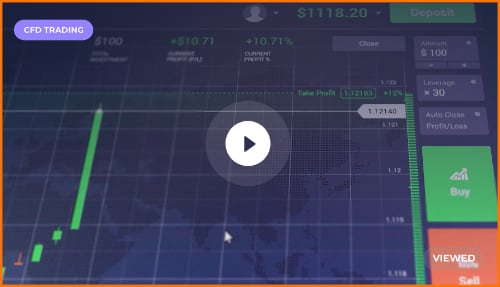What does short selling entail? As a technique employed by traders amid declining markets, instability, heightened volatility, or crises, short selling plays a crucial role in CFD trading and is favored by numerous traders. Dive into this video to gain insights on short selling and uncover its applications in trading.
What is short selling?
Short selling is a trading technique frequently utilized amidst declining markets, high volatility, or financial crises. This article delves deep into short selling, offering valuable insights for both novice and experienced traders alike.
Defining Short Selling
Short selling, often referred to as ‘shorting’, is an investment strategy where traders speculate on the decline in a security’s price. This technique allows traders to profit from falling markets, effectively enabling them to navigate through various market conditions.
Short Selling Mechanics
Initiating a Short Position
Traders initiate a short position by borrowing shares of a stock they anticipate will decrease in value. After borrowing the shares, traders sell them at the current market price with the goal of buying them back later at a lower price.
Closing a Short Position
A short position is closed once the trader decides to purchase the borrowed shares to return them to the lender. Ideally, if the shares’ price has declined, traders buy them back at a lower price than they initially sold them for, making a profit from the price difference.
Understanding the Risks
Like any trading strategy, short selling is not without its risks:
- Unlimited Loss Potential: While traditional investments cap losses at the initial investment amount, short selling losses can be infinite since stock prices can rise indefinitely.
- Short Squeezes: A short squeeze occurs when short sellers are forced to buy shares to cover their positions as stock prices rise sharply, further driving up the price.
- Regulatory Risks: Governments and regulators might impose bans on short selling during financial crises to stabilize the markets, affecting short sellers adversely.
Benefits of Short Selling
Despite its risks, short selling offers various advantages:
- Profit from Market Declines: Short selling allows traders to generate profits during market downturns, providing a hedge against losses.
- Market Correction: By capitalizing on overvalued stocks, short selling contributes to market correction, bringing prices in line with their intrinsic value.
- Portfolio Diversification: Including short positions in a portfolio can enhance diversification and reduce overall risk.
Strategies in Short Selling
Various strategies are employed by traders engaging in short selling:
- Pair Trading: Traders short one stock while going long on another within the same sector, aiming to profit from the relative performance of the two.
- Hedging: Short selling can be used as a hedge against potential losses on long positions in a portfolio.
- Market Timing: Experienced traders might use short selling to capitalize on market timing, anticipating price movements accurately.
Noteworthy Short Sells in History
Historically, there have been several noteworthy short selling instances, providing learning opportunities for traders:
- The 1929 Great Depression: Some traders, like Jesse Livermore, profited immensely by short selling stocks before the market crash.
- The 2008 Financial Crisis: The collapse of Lehman Brothers and the ensuing financial crisis provided fertile ground for short sellers, with many profiting from plummeting financial stocks.
Conclusion: Weighing the Pros and Cons
Short selling is a nuanced investment strategy that offers the potential for significant profits during market declines but also carries substantial risks. Engaging in short selling requires a deep understanding of market dynamics, careful risk management, and, often, a willingness to act counter to general market sentiments. By thoroughly understanding the mechanics, risks, and benefits of short selling, traders can better navigate this complex landscape and make informed investment decisions.






 How to trade CFD? (00:49)
How to trade CFD? (00:49) How to trade binary options*? (01:22)
How to trade binary options*? (01:22) Forex. How to start? (01:01)
Forex. How to start? (01:01)